
This post was originally published in 2014 and is republished with updates. Read more about how to get involved in Museum Store Sunday taking place November 26, 2023!
I had the pleasure of giving a talk at the Museum Store Association conference in Houston a few years back. My hosts invited me to exploring how, in the future, stores might play a more integrated role in the museum.
I loved this assignment, not least because I’ve long followed stories documenting museums’ often conflicted relationships with their retail operations. See, for example, the fuss that was kicked up over the Takashi Murakami exhibit, staged both at LA MOCA and the Brooklyn Museum. The exhibit was designed around a fully functioning Louis Vuitton store selling Murakami merchandise—which shocked a bunch of people, even though it was entirely apropos of Murakami’s identity. A few years ago, the debate over whether the 9-11 Memorial Museum should have a shop at all, and if so, what is it can appropriately sell. (Consensus: not cheese plates.) Even though we all know that nonprofit is a tax status, not a business strategy, we in museums often seem to act as if commercial activity is a necessary evil, something that ought to take place at a dignified remove from the core activities of the organization.
That seems odd to me, as someone both devoted to museums, and to shopping in museum stores. I think museums per se and their stores spring from the same basic human impulse. Somewhere at the heart of the hard-to-define museum identity is the nature of our relationship to objects. My personal theory is that our thoughts, emotions and memories are too big to be encompassed by our oversized mammalian brains. We use objects as receptacles for the overflow, as repositories of memories, feelings and stories.
The museum store is a natural extension of our relationship to the objects we preserve in museums: enabling people to capture and archive their memories, feelings and stories of their visit. In the past, stores did this by selling stuff, and doubtless will continue to do so. But they may also find other ways of fulfilling this function in the future. Sure, in the future stores may sell futuristic “things” (such as Adam Harvey’s “stealth fashion”) but importantly, they may behave in different ways.
To free up our thinking about the “museum store of the future,” let’s look at four assumptions that currently undergird the status quo. Stores:
- choose what to stock and sell
- deal with tangible objects
- transfer ownership of objects to customers
- are primarily about financial transactions
Let me present the cast that current trends could call each of these assumptions into question.
The Rise of Personalization

What is even hipper than a name brand item? A personalized name brand item. Now you can use photos from your smart phone to customize your Adidas sneakers or iPad covers. And photography in the museum is now ubiquitous—“No photos” is the exception rather than the rule. Technology—e.g., smart phones, Etsy, self-publishing platforms—that enables people to make and sell their own sharables could be seen as competition with traditional store products. (True confession: sometimes I generate my own postcards with the Postagram app, and send from inside a gallery during my visit, no stamp necessary.) But visitor-generated digital content is also an opportunity to invite people to put their own personal stamp on the museum brand.
Perhaps in the future: in addition to choosing merchandise to stock and sell, museum stores encourage visitors design their own personalized products, using the museum’s resources. A store could offer print on demand services (for e-publications or physical books) in which visitors’ combine their own photos with museum images, and add their own text. In short, the store could create the in-house retail equivalent of the Rijksmuseum’s radical invitation, via their Rijksstudio, to “take our stuff and do anything you want with it” (including creating temporary tattoos or decorating a car). The museum store becomes a point of access to the museum’s open resources.
The Maker Movement and Accessibility of Digital Resources
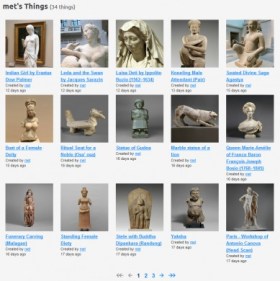
Mass personalization is made possible, in part, by the increasing sophistication and plummeting costs of technologies like 3D printing that transform digital data back into physical objects. Increasingly, museums are capturing and sharing digital data (2D or 3D) about their collections, and people are becoming more sophisticated about manipulating digital content—whether it’s cropping & applying filters to an image file, manipulating up digital data to create their own 3D creations.
Perhaps in the future: In addition to physical objects, museum stores will vend data. Free content is great (when it is subsidized) but maybe there is also a place for paid premium digital content—early access to newly scanned acquisitions, for example, or higher resolution images. Or the museum store may also become part maker lab, helping people choose and manipulate data to create their own personalized objects. The store becomes a partner in co-creation.
Use rather than Ownership
One of the trends I’m following closely is the rise of the “sharing economy.” What role can museum stores play in a future that values access over ownership? In TrendsWatch 2014, I list just a few of the many instances of “art sharing” programs run by museums. I also cite the Museum of Vancouver’s Swap-o-rama-rama as an example of a museum choosing to play a part in the entire life-stream of products by serving as a site for exchange of goods.
Perhaps in the future: museum stores facilitate sharing and reuse, at a larger scale, and in new ways. Museums might create collections of historic cars or tools, for example, for loan to the public in order to cultivate a constituency interested in deeper engagement with the subject. People may value the chance to tap into museums’ knowledge and expertise, and connect with fellow enthusiasts, as well as the opportunity to use stuff they don’t want to (or can’t afford to) own. The store joins the growing economy of organizations matching underutilized resources with willing users.
New forms of currency
Data has been dubbed “the new oil”—a gushing human-generated resource that can be monetized in many ways. Clicks on a web page translate into advertising revenue. More subtly, information about individuals is transformed into personalized, highly targeted marketing. Data helps companies refine their products and services, making them more valuable.
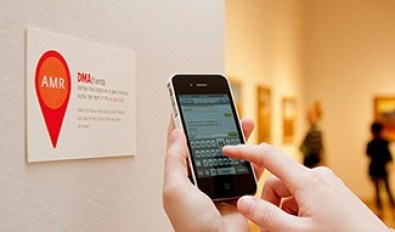
Our algorithmic ability to find meaning of the mass of data we generate fuels advances in fields as diverse as law enforcement, medicine and disaster relief. Museums are already starting to play in the realm of big data, using analytics to build visitor engagement and loyalty, personalize communications, and track impact.
Perhaps in the future: museum store clerks will ask “will that be cash, credit, or personal data?” That’s a flippant way to frame a serious challenge: not how to configure the checkout register, but how to integrate the store into the whole ecology and economy of the museum. The stores becomes one of many facets of the museum responsible for interfacing with visitors, playing a role in the exchange of personal data for valued experiences, the collection of metrics on behavior and participation, the sharing of expertise and information, and deepening visitor engagement overall.
My only disappointment in my time at the MSA meeting was that most of the attendees were (no surprise) people who manage museum stores. The challenge presented by this presentation—how to integrate the store more deeply into the museum’s operations—is one that needs to be tackled by the museum as a whole, including directors, CFOs, educators, experience designers, and evaluators.
So I’m going to end by asking you some questions I lobbed at the MSA attendees, and encouraging you to share them, along with this essay, with you museum’s leadership and the staff of all departments. I hope you report back on some of your collective answers in the comments section, below.
Warm-up questions:
- Name one thing about museum stores that is true now, that you think will not be true (or will be rare) in 20 years.
- Name one thing you see just beginning to happen in retail (museum or otherwise) that you think will be mainstream in 20 years.
And the heavy lifting:
- What do you think is the “core identity” of your museum’s store–the essential role it plays in your operations?
- How might that role be fundamentally different in the future

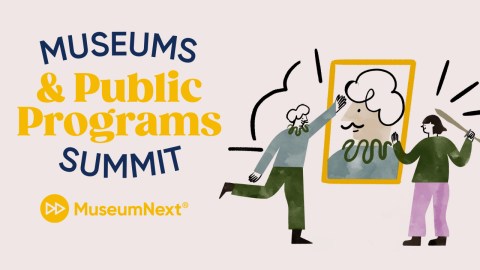


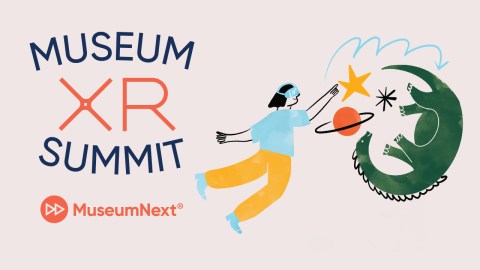
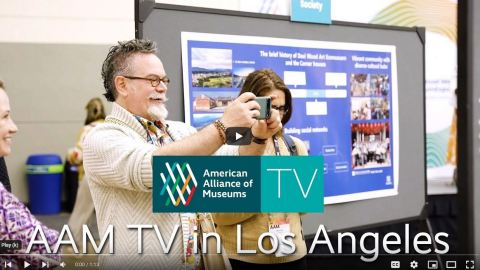



I'd be interested to see a large museum really try an integrated store where the border between the objects on show and the objects for sale are intermingled.
Not that that idea is necessarily new – see also MOMA's 1939-1940 exhibition "Useful Objects of American Design under $10.00".
And I think in the contemporary art world we're already seeing this in the popularity with the public of the art fair.
Agreed, Seb. And the blurring of boundaries may come from the commercial side, as well. I've been watching signals of a trend towards galleries becoming more "museum-y" and educational. (For example, an article in ArtSlant last year quoted the former chief curator at LA MOCA, Paul Schimmel as saying he intended to bring "museum-style fixings" including educational programs to the commercial gallery he joined.)
I think for many zoo and museum gift shops the first step is making sure that they somehow represent the organization and it's mission. Most of the zoo gift shops that i have been to are nearly interchangeable, the same t-shirts, just with a different logo on the sleeve, the same coffee mugs, the same stuffed animals (i still can't use the word "plush" to describe what was a stuffed animal most of my life, the same display of rocks, the same bits of plastic junk that will be broken, lost or thrown away within a week. I was blown away, however at the National Museum of the American Indian, which actually had for sale art done by some of the people whose art was displayed.
I am glad you brought up NMAI, Albert. They exemplify the role a museum store can play in building business economies for the cultures & people they represent. The Museum of International Folk Art in Santa Fe, of the current participants in Innovation Lab for Museums, is also exploring this role in its "Museum/Market Alliance Project."
At the Rosicrucian Egyptian Museum, where I interned and volunteered, there was a wonderful museum store with a friendly, helpful clerk at the counter. The items were not cheap, but they were fairly reasonable; lots of statues and jewelry, and a decent collection of interesting books and magazines, and a section of color books and games about ancient Egypt for children. Everything meshed very well with the exhibits, and there was something for almost everyone ages 4 and above; you could take a little piece of ancient Egypt home with you. People LOVED that store, and even the kids on field trips with their school classes often brought money to buy something. Then for some reason (presumably it wasn't making as much profit as the directors wanted), they made the store online-only with almost nothing of interest in it, and turned the space into a reading and meditation area. Result??? Some VERY disappointed visitors. The last couple of times I was there, both times on weekends, there were almost no visitors at the museum, and no one at all in the new reading area. I've always wondered how much of a drop in visitors they experienced simply by closing the physical store.
Lucretia, thanks for sharing that story. Even if they did not lose visitors, I wonder how not having a store changed the experience? It would be interesting to test how a visit to the museum store affects how people feel about their visit, and how they remember it, months or years in the future.
And Seb, to continue along those lines, see this story about a loan from LA MOCA to a commercial gallery http://www.latimes.com/entertainment/arts/culture/la-et-cm-moca-loan-frank-stella-honor-fraser-gallery-20140610-column.html “MOCA is committed to loan artworks to encourage public enjoyment of objects,” the museum said in a statement. So a non-museum store essentially becomes an extension of the gallery.
I was fortunate enough to be in the audience when Elizabeth was giving us these interesting signposts to the future of non-profit retail! She caught our attention (and challenged us!) with some extraordinary directions that our businesses might take in order to accommodate an ever-shifting audience and marketplace. I completely agree that we need to capture the attention of ALL the other departments of our institutions and make them see that a museum store is a vital part of what we present to the public and a potent means to extend the visitor’s experience in a complete and holistic way. The relationship between the objects exhibited and the objects sold should act as a very concrete connection for that wonderful experience the visitor just had!
Some truly great – if at times unnerving – ideas that we should all be examining in order embrace the next wave of non-profit retail!
To look at the questions of what will not be true or rare in a museum store in 20 years or what will be more mainstream in 20 years you need to look at the future customers or Generation Next. This cohort is the future museum attendee assuming most museum attendees are 25+ years old. The things that influence their lives include a comfort with technology that most older than them do not have. It includes a different world view where globalization is a given and the US has a more open-door policy with immigrants, and specifically Hispanics. They are very social through technology and probably have posted more Look at Me pictures than any other generation. Family matters most and they admire teachers and mentors more than ever. Our stores need to change in order to engage this new customer. As much as the outside retail world is using technology in their everyday business, the museum store needs to use this technology too. So what will not be true or rare will be the current transactional interface between customer and sales associate. What the new interface will be will probably change 20 times between now and 20 years but it will not be the same. What may be mainstream in 20 years is the interaction of the artist in the store merchandise offerings. There has been a written or unwritten code of not offering the living artist who is represented in the museum into creating merchandise for sale in the shops because of the effect on value or future value of the collection. Some museums have pushed the edge on this as noted by Elizabeth and the sales have been very successful. The public wants a real piece of the artist, not a giclee or some such. I hope this is an area that becomes more mainstream. So what is the essential role of a museum store? As I and my colleagues strive to do every day, we are an extension of the museum-goers experience. As Elizabeth so eloquently puts it–after I have had that experience, I want something to capture those memories into whether it is a postcard of my favorite work of art or a coffee mug to use in my office every day that reminds me of the wonderful experience I had at XYZ museum. It is a piece of jewelry made by a local artist that my friends all comment on how beautiful it is. It is my memory-catcher. The museum store offers items related to its collections and according to the museum's mission. If the store is on the mark, the typical museum-goer will make a purchase. They will be told that their purchase today will help future education programs or exhibitions at the museum. The visitor has a full-experience once they've experienced a collection and made a purchase in the museum store. The museum store serves many other purposes such as selling entrance tickets or memberships to the museum, as an information center, offers additional educational books and catalogs and so much more. The museum store has many core purposes and a visit to a museum isn't complete until that final stop. I do not think the future holds changes in the core functions of the store–just the product offerings and the way of the transactional experience. I know wherever I travel throughout the world, no museum experience is completed without a stop in the store and the purchase of a postcard or some special memento as a reminder of what a wonderful experience I had.
I have concerns about the concept of personal data as a currency here. I understand the importance of visitor metrics to a museum, as I am looking to design a visitor study for my small local museum so that we might glean information on how to raise visitorship, such as who we are attracting and what we might do to attract others. However, I am also very personally inclined towards data privacy. If I went to purchase something and was asked for personal data in return for my item, I would decline. I am much more likely to simply fill out a visitor survey if asked, given that the purpose is clear.
Asking for personal data is a slippery slope, a museum should have clear policies on the retention of visitors’ data, if/how the data is anonymized, and how the data will be used, all of which should be communicated to visitors prior to them providing their information. A museum should be trusted to not sell this information, anonymized or not.
How would you suggest a museum manage and use this type of data while retaining visitor and community trust?
I have concerns about the concept of personal data as a currency here. I understand the importance of visitor metrics to a museum, as I am looking to design a visitor study for my small local museum so that we might glean information on how to raise visitorship, such as who we are attracting and what we might do to attract others. However, I am also very personally inclined towards data privacy. If I went to purchase something and was asked for personal data in return for my item, I would decline. I am much more likely to simply fill out a visitor survey if asked, given that the purpose is clear.
Asking for personal data is a slippery slope. A museum should have clear policies on the retention and security of visitors’ data, if/how the data is anonymized, and how the data will be used, all of which should be communicated to visitors prior to them providing their information. With data brokers being a concern of many people in this day and age, a museum must maintain the trust of its visitors and community and should not sell this data.
How would you suggest a museum go about tackling these issues regarding personal data, visitor trust, and safety? And how would you convince visitors that this is even a good idea for them to participate in?